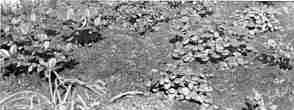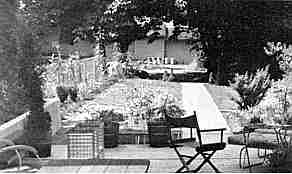QBARS - v12n1 Rhododendron Notes
Rhododendron Notes
Import permits are required if you wish to bring in rhododendron seed from Europe. This is not a new regulation but is now being more strictly enforced. Rhododendron plants from Europe may be imported but will be under post entry quarantine. They will be inspected at intervals and no stock can be disposed of for two years.
Our polyethylene plastic greenhouses were very useful but re-covering each year becomes a chore. We are now trying a newer material which is supposed to be good for several years. It is completely transparent whereas the polyethylene was merely translucent.
A recent article in the R. H. S. Journal indicates mist propagation is just getting established in England. It has been used for a number of years by rhododendron propagators in the Northwest.
The International Code for Horticultural Nomenclature still contains the controversial item permitting group names for woody plants. The American Horticultural Council recently went on record as recommending an amendment to this code which would state that no plants should be sold under a group name unless they were labeled as seedlings. This would not necessarily mean that they were propagated by seed, but that the particular plants were either seedlings themselves, or grown from a seedling of the group, hence that other plants of the same group name might be different.
A serious study of the landscape use of rhododendrons would be of great value. There are so many types and sizes now available that one cannot lump the whole lot together when making planting recommendations, and yet that is the way popular garden writers often handle the subject.
Progress is being made in developing methods for growing rhododendrons under more adverse, dry, alkaline conditions. Some of the steps in this progress involve the use of shade, water, peat moss, adjustment of pH, chelated iron, ammonium sulfate, and varieties especially resistant to the adverse conditions.
- J. Harold Clarke
The annual convention of National Council of State Garden Clubs will be held in Seattle, May 19-24 at the Olympic Hotel. We understand that more than 1000 members from all over the country will be in attendance. Some of these people are also members of the American Rhododendron Society. When passing through Portland it is suggested that they visit the National Test Garden of the society. This planting of very large rhododendrons is the largest and most complete in the country. It has been said, by English visitors, to compare favorably with the finest plantings in England. More than 3000 plants are in the garden, some more than 40 years old. For additional information contact our secretary-treasurer, address given on first page of this Bulletin.
The matter of seed distribution from the Test Garden occasionally comes up and was thoroughly discussed at a recent Directors meeting. Species seed many times does not come true unless carefully hand pollinated. Getting fine species from seed is a matter of just as careful selection as it is to obtain a good hybrid. There is often a great variation of species raised from seed. The directors believe that seed should not be distributed by the society unless it is good seed. No funds are available to finance the work of hand pollination, picking, cleaning and packaging.
The garden of new members, Mr. and Mrs. Doug Polevka, Portland, was featured in a pictured story in the August issue of Sunset magazine. This garden, only 20 feet wide by 103 feet deep, is remarkable for its completeness and for the large and fine selection of plants it contains. Dwarf heathers, a small rose garden, several large rhododendrons and a choice collection of dwarf ones, are featured. It also contains annuals, perennials and bulbs. Fine varieties of clematis grow on the walls and property line fence. The garden is pictured here. (Fig. 8 and 9)

|
|
Fig. 8 A small section of the garden
showing dwarf rhododendron |

|
|
Fig. 9 One of the sections of the garden |
Trees to grow with rhododendrons should be selected for their own beauty as well as for protection to shade-loving shrubs. Such trees as the flowering crabs, cherries and prunes come in this class as well as Styrax japonica, the different forms of dogwoods, laburnum and a number of the small growing ornamental maples. Some of these trees give several seasons of color in the garden; when they flower, when in fruit and brilliant fall foliage.
There is a need for a small inexpensive booklet for the beginner in rhododendrons and the home owner who just grows a few plants. "Rhododendrons and Azaleas for the Amateur," recently issued by the University of California Agricultural Experiment Station Extension Service, unfortunately does not adequately fill this need. Quality ratings used are those of the R. H. S, England, which do not always apply to plants grown in this country. Those ratings compiled, from a national survey of growers in this country, by the American Rhododendron Society, should have been used.
While the black-and-white pictures are good the color leaves much to be desired. They certainly do no justice to the plants illustrated and would not create a desire to have them growing in the home grounds. The attempt to compile and apply a list of common names to species is unfortunate. There is but little demand for such a list. Most of the names do not fit the plants. Two of the names are already used for hybrids: 'Bluette', and 'Fortune'. We do not want a rhododendron nomenclature confused such as we now have in azaleas and camellias. There are other errors. A great deal of factual, up-to-date material is available from the publications of the American Rhododendron Society. This material is available, without cost, for any writer to use.
Elbert E. Reed, Angol, Chile; writes "Many parts of this country are ideal for the growing of azaleas, rhododendrons, camellias, etc. There are quite a few varieties of rhododendrons in Chile at the present time, but they are largely without name, the identification having been lost with the passing years."
- Bob Bovee
